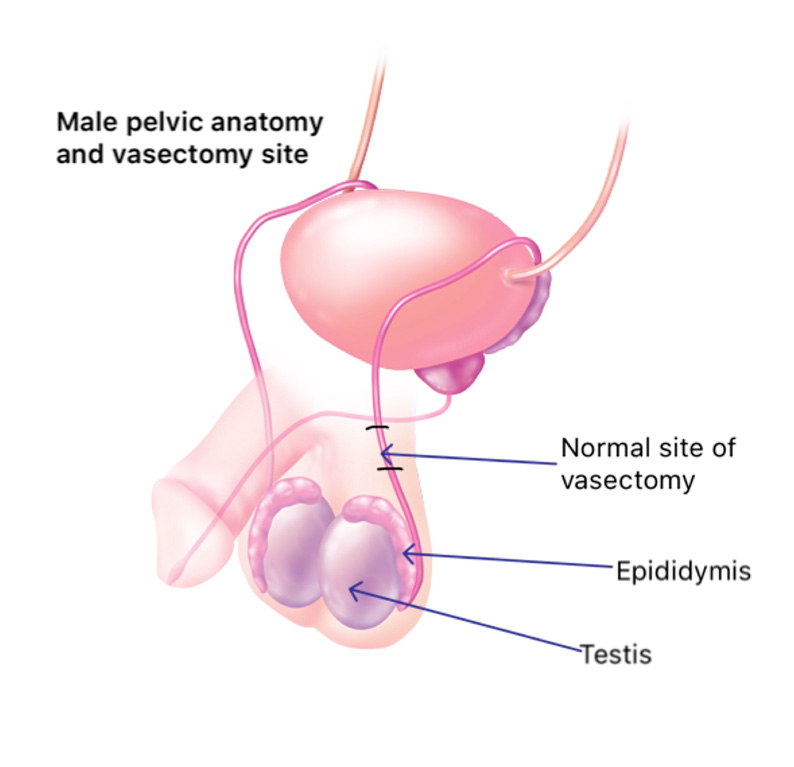Most people believe that problems with fertility are mainly due to the female partner, but up to 40% of cases may be related to male factors. A semen analysis is crucial as a starting point to determine if there is a male factor, but even with a normal semen result, there may still be a problem related to the sperm.
The anatomy of the male fertility system

Our male fertility expert, Steve Bromage, will assess and arrange specialised tests for all cases of male infertility. If infertility is the result of a vasectomy, then he can offer all types of reversal, including a microscopic
reversal of vasectomy.
When there is no sperm at all in the semen this is called azoospermia. Click on this link to find out more.
Diagrammatic representation of vasectomy

Azoospermia
If the infertility is not due to a previous vasectomy, then there can be a number of underlying causes. There may be a blockage which is preventing sperm release, or there may be a problem with sperm production.
Surgical sperm retrieval may be required, which is a procedure carried out to extract sperm from the testes or surrounding structures. Sperm can be retrieved from the epididymis (a structure that surrounds the testis), or the testis. Steve can also perform microscopic sperm extraction from the testis – this procedure enhances the surgeon’s vision in order to identify areas of sperm production in the testis.
See the links below that explain these surgical sperm retrieval procedures.
• PESA
• TeSE
• Azoospermia
Patient information: Surgical sperm retrieval
Sperm may be retrieved from the testis itself, or from a structure that surrounds the testis called the epididymis. If sperm is retrieved from the epididymis then this is done usually with a fine needle placed through the skin and directly into the epididymis called a PESA. It can be performed under local anaesthetic or sedation and occasionally under general anaesthetic. There are minimal complications from a PESA although there may be some bruising in the scrotum and some discomfort. This should resolve after a week, and although strenuous activity should be avoided for a few days, most types of work can be done immediately after the procedure.
If sperm is retrieved from the testis, called TESE, this can either be done through a small cut in the scrotum and a biopsy gun or through a slightly wider cut in the scrotum and an open biopsy. Again, this can be performed under local anaesthetic , sedation or general anaesthetic. There is usually some bruising in the scrotum and some minor discomfort. There is a small chance of infection or testicular damage, but this is rare. Strenuous activity should be avoided for 2 weeks, and only light duties at work would be advised for a few days after the procedure. A scrotal support is given out after the procedure and should be worn for a few days to prevent bruising, but could be exchanged for some tight fitting underpants.
If a microscopic dissection is performed to retrieve sperm then the recovery and post-operative instructions are the same as for TESE as described above. There is a higher chance of a temporary drop in testosterone with microscopic dissection which can make men tired and lacking in energy until this picks up again. This can take several weeks to return to normal.
Contact Information
For any queries or information regarding prices, please contact Jo Smith on 0161 495 7791 or email n.fuller@manchesterurology.org.uk.
Links
Information on sperm retrieval through the British Association of Urological Surgeons can be found here: http://www.baus.org.uk/_userfiles/pages/files/Patients/Leaflets/Sperm%20retrieval.pdf